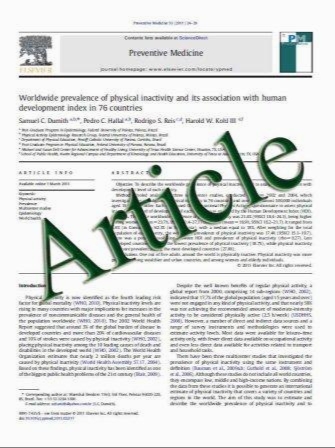Hydrocephalus in toddlers: the place of shunts in sub-Sahara African countries
- نوع فایل : کتاب
- زبان : انگلیسی
- مؤلف : Vincent de paul Djientcheu , Seraphin Nguefack , T. Olivier Mouafo , A. Stephane Mbarnjuk , T. Yves Yamgoue , Figuim Bello , Giles Kagmeni , Elie Mbon
- چاپ و سال / کشور: 2011
Description
of hydrocephalus in toddlers in our setting in order to determine the proportion of those who could benefit from endoscopic third ventriculostomy (ETV). Methods This prospective and descriptive study included all toddlers operated on for hydrocephalus from 1 March 2008 to 31 March 2010 at the Yaounde Central Hospital. Results Forty-six toddlers were included representing 72% of all hydrocephalus cases managed at the Neurosurgery Unit during the study period. The mean age was 6.9± 1.6 months. The delay before treatment varied from 5 days to 15.8 months (mean=3.7±0.5 months). The commonest clinical presentation was macrocrania (78.3%). Of the toddlers, 58.7% presented with a probable blindness (loss of ocular pursuit); dilated and non-reactive pupils were found in nine patients (19.6%). The diagnosis was based on transfontanellar echography (TFE), CT scan or combined TFE and CT scan. Identified aetiologies were aqueduct stenosis (28.7%), haemorrhage (18%), Dandy–Walker’s syndrome (14.3%), meningitis (10.8%), myelomeningocele (10.8%), agenesis of Monro’s foramen (3.6%), brain abscess (3.2%) and posterior fossa tumour (3.6%). No specific cause was found in 7% of cases. The treatment was ventriculoperitoneal shunting in 42 cases (91.3%) and ETV in two cases (4.3%). Infections (11.1%) and shunts’ obstruction (5.4%) were the main complications. Conclusion Cases of hydrocephalus in toddlers are frequent in our setting. Regardless of the patient’s age, the most prevailing aetiologies (infections, haemorrhage, myelomeningocele) and technological conditions (neuroendoscope) are less favourable for ETV. The use of ETV in the treatment of hydrocephalus in sub-Saharan Africa is still marginal and needs to be encouraged in selected cases. The prevention of non-tumoral hydrocephalus is of critical importance.
Childs Nerv Syst DOI 10.1007/s00381-011-1548-0 Received: 9 June 2011 / Accepted: 29 July 2011


